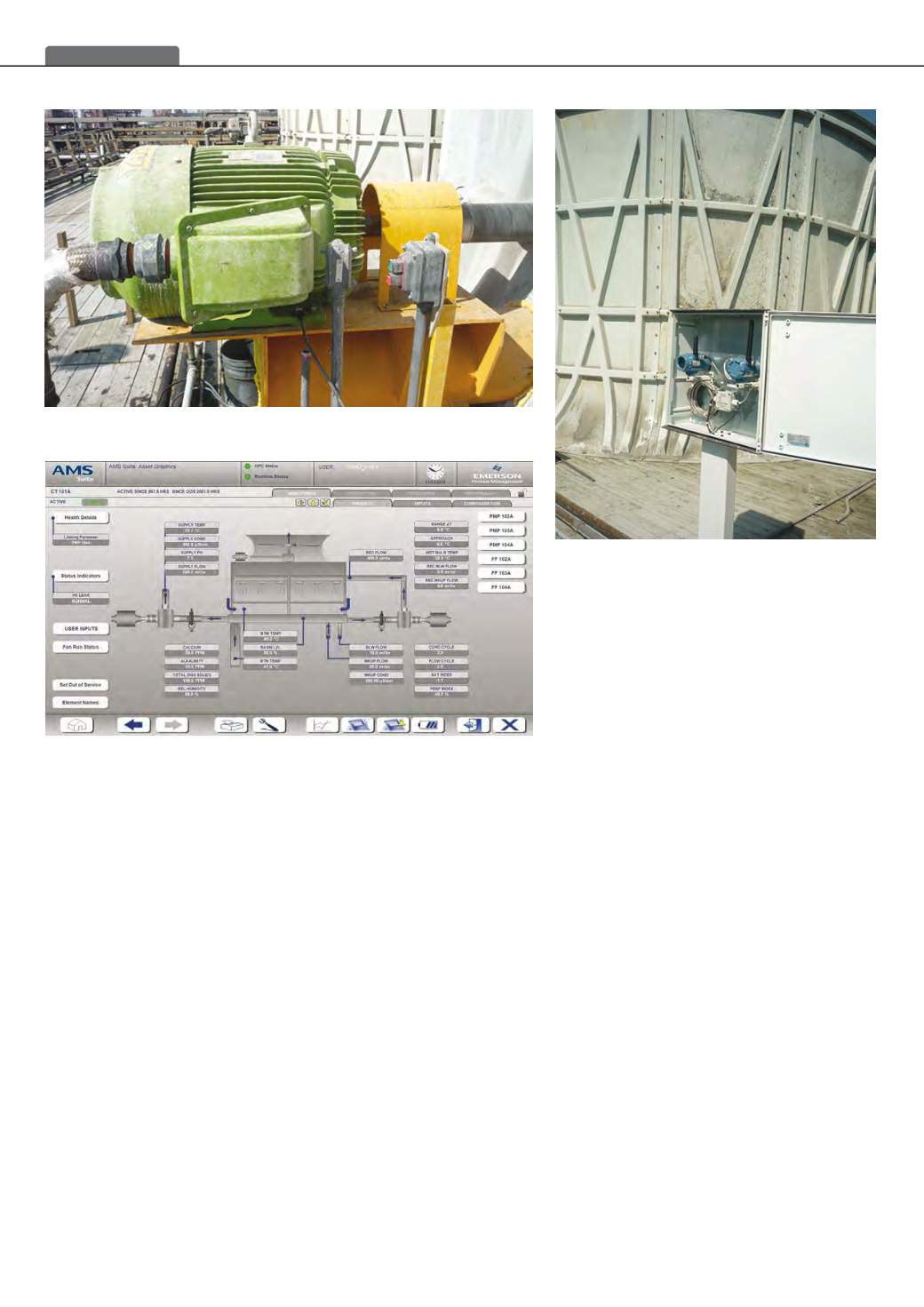

Chemical Technology • April 2015
8
PETROCHEMICALS
integration from each gateway into the refinery’s DCS can
be done via Modbus or other digital data network, and a
backhaul network with 802.11Wi-Fi radios can provide data
integration into local HMIs via OPC.
Analyzing the data
The next step in improving cooling tower control is analyzing
the data gathered from the wireless transmitters. Various
software packages exist for doing so, such as Emerson
Process Management’s Essential Cooling Tower Monitoring
Solution (EAM) that provides early warning of limited cooling.
It also provides diagnostics to help operators spot bearing,
lubrication, or alignment problems in cooling tower pumps
and fans. Automatic alerts flag personnel to cooling water
conditions so they can adjust blowdown rates and minimize
the use of water treatment chemicals. This helps refinery
operators recognize and prevent cooling failures before
they occur.
The EAM software runs as part of Emerson’s AMS Asset
Management System. Pre-engineered, ‘plug-and-play’ solu-
tions like EAM analyze process and asset data to determine
faults. These solutions also apply statistical analysis to detect
meaningful changes. EAMpresents this data as overall asset
health information via user-friendly operator displays with
automatic alerts (Figure 4). This allows refinery operators to:
• Take action based on real-time alerts
• Diagnose root causes
• Employ predictive maintenance in the cooling towers
• Prevent devastating failures by heeding early warnings.
EAM provides early detection of asset health degradation
to give a refinery time to perform preventive maintenance.
The refinery can bring a spare online before the fan shuts
down unexpectedly, avoiding downtime and costly repairs
to the fan.
Taking a fan out of service before it fails catastrophically
saves repair costs. Instead of $1,6 million to overhaul a fan
that was run to failure, repairsmay only cost $40 000 per fan.
Asset Graphics provide alarms and alerts that otherwise
would not be available without a cooling tower expert looking
at instrumentation data. Asset Graphics analyzes the data
and alerts the operators, who can then call in a cooling tower
expert for analysis and to determine a plan of action. This
on-line, continuous analysis is vital for early warning in order
to avoid shutdowns.
Dramatic results
• At one refinery, the savings from using WirelessHART and
analytical software was dramatic:
• Rounds took a total of 8 760 hours annually before wire-
less. That has been reduced to 1 100 hours annually — a
savings of 87 % or 7 660 operator hours.
• Better water chemistry reduced chemical costs. That, in
Figure 2: Cooling tower fan failures can shut down a process – sometimes
an entire refinery.
Figure 3: An enclosure protects WirelessHART trans-
mitters from the corrosive environment near cooling
towers.
Figure 4: Operators are
alerted to cooling tower equip-
ment problems via an AMS
Asset Graphics screen.



















